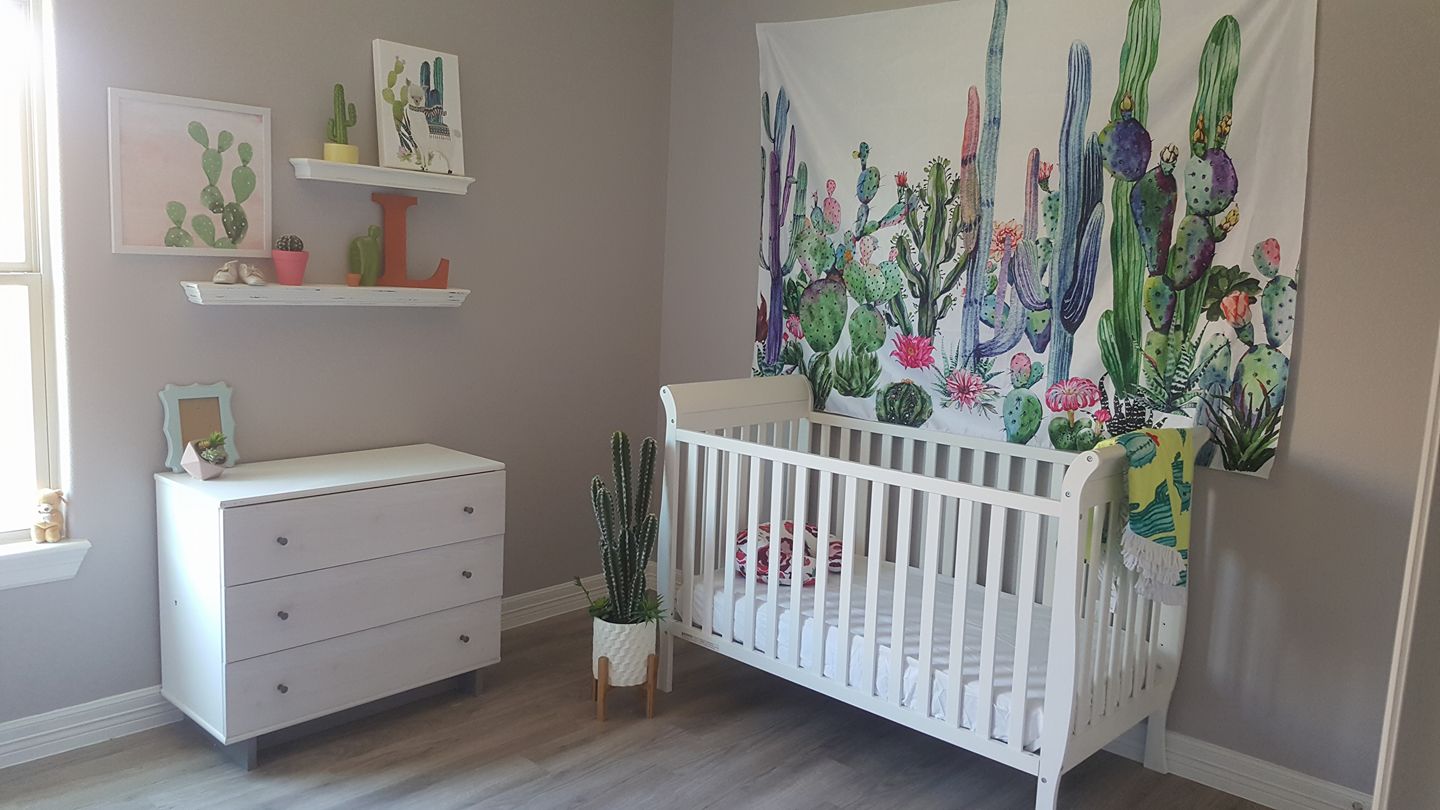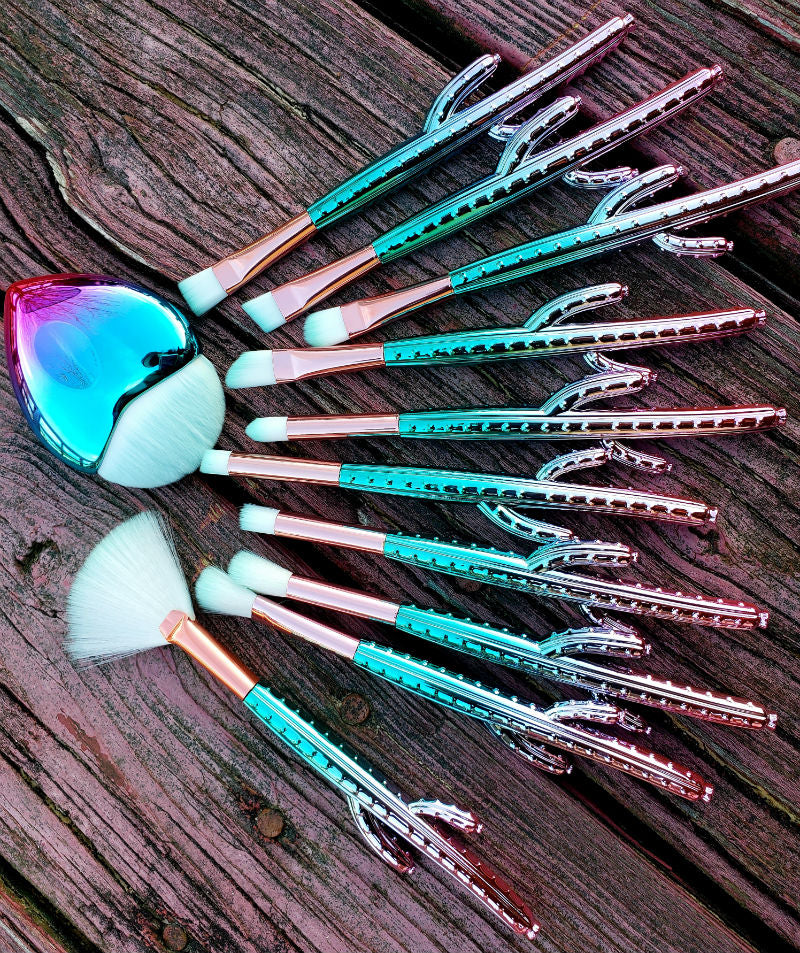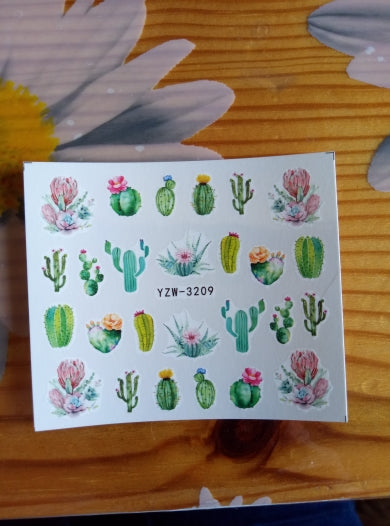Top Tips for Beautiful Mother of Thousands Succulents
Ready to add an amazing new plant to your collection?
Meet the Mother of Thousands! It's not just beautiful with its lush green leaves, it's also wonderful because it can produce lots of baby plants very easily!
Picture this: a plant that produces tiny plantlets along its edges, each one ready to grow into a new succulent plant. Also known as Kalanchoe daigremontiana, this succulent is a real beauty whether you grow it outdoors or indoors.
But how do you make sure your Mother of Thousands succulents thrive and delight when they reach their full growth?
Have a look at our top tips for growing wonderful Mother of Thousands Succulents. From great potting to proper watering, this guide covers everything you need to nurture and enjoy this unusual succulent.
Get ready to turn your gardening space into a lush haven of green with these Mother of Thousands care tips!
Choosing the Right Pot and Soil
The Best Pot Types for Mother of Thousands Succulents
Choosing the right pot for your Mother of Thousands is important. These succulents prefer a cozy but breathable space.
Terracotta or clay pots are the best choice because they are porous, which lets air circulate around the roots. This helps prevent the soil from becoming waterlogged, which is a common problem for succulents.
Avoid plastic pots if you can. They tend to hold moisture and can cause root rot. If you have to use a plastic pot, make sure it has plenty of drainage holes. With good drainage your Mother of Thousands will be much happier!
Why Succulents Need Well-Draining Soil
The right soil is just as important as the right pot. Mother of Thousands Succulents need well-draining soil. Regular potting soil is too dense and holds too much moisture.
Use a cactus or succulent soil mix for the best results. This type of soil is designed to drain well, keeping your plant healthy and happy. To make the soil drain better, add perlite or coarse sand. This helps with airflow and stops the roots from sitting in water.
Out in nature, these plants grow in dry areas with fast-draining soil. Copying this environment will keep your succulent healthy and vibrant. Once you have the right pot and soil, you're on your way to growing a beautiful Mother of Thousands.
Next, we'll cover the key planting details to keep your succulent thriving...
Planting Your Mother of Thousands Succulents
Step-by-Step Guide to Planting
Planting your Mother of Thousands is fun. Follow these steps to give your succulent gardening the best start:
-
Choose Your Pot: Start with a clean, well-draining pot. As mentioned, terracotta or clay is best.
-
Prepare the Soil: Fill the pot about two-thirds full with your well-draining soil mix. Remember, good drainage is important.
-
Place the Plant: Gently remove the Mother of Thousands from its current pot, being careful not to damage the delicate roots. Place it in the center of the new pot.
-
Add More Soil: Fill in around the plant with more soil mix, making sure to cover the roots but leave the top of the root ball exposed. Lightly press the soil down to remove air pockets.
-
Water Sparingly: Lightly water the plant to settle the soil. Wait a few days before watering again to let the roots adjust to their new growing space.
Tips for Succulent Propagation

Mother of Thousands Succulents are great at propagating. Here are the best plant propagation tips:
-
Collect the Plantlets: Tiny plantlets grow along the edges of its leaves. Gently remove them when they have small roots.
-
Prepare the Soil: Use the succulent well-draining soil mix in a shallow tray or small pots.
-
Plant the Plantlets: Place the plantlets on top of the soil. No need to bury them, just press down lightly.
-
Water Lightly: Mist the plantlets to keep the soil slightly moist. Avoid overwatering to prevent rot.
-
Provide Good Lighting: Place the tray or pots in bright indirect light. Too much direct sunlight can scorch the young plants.
-
Be Patient: It may take a few weeks for the plantlets to create roots and start to grow. Be patient and careful to not overwater.
By following these steps, you’ll soon have a thriving collection of Mother of Thousands Succulents!
Next, we'll cover the ideal lighting to keep your succulents happy and healthy...
Succulent Light Requirements
Special Light Conditions
For your Mother of Thousands to thrive, it needs the right light. These succulents love the sun but prefer bright, indirect light. Place them near a window with plenty of sunlight but not direct rays. A south-facing window is perfect for all-day light.
If growing outdoors, choose a spot with morning sun and afternoon shade to prevent too much direct sunlight, which can be harmful.
Avoiding Sunburn and Light Stress
While Mother of Thousands succulents are tough, they can get sunburned or stressed from too much direct sunlight. Signs of sunburn include leaves turning brown or white. If this happens, move your plant to a spot with filtered light. If your succulent isn't getting enough light, it can become leggy as it stretches towards the light source. Adjust its location to provide the right balance of light.
To prevent sunburn and light stress, gradually adjust your Mother of Thousands to brighter light if it’s been in a low-light location. Start by placing it in a slightly brighter spot for a few hours each day, then increase the time over a week or two. This helps the plant adjust without being shocked by sudden changes in light intensity.
When you give your Mother of Thousands the right light, it will stay healthy. It will grow great plantlets along its leaves.
Next, we'll explore the perfect watering schedule to keep your succulent thriving...
Succulent Watering Schedule
How Often to Water Mother of Thousands
When watering your Mother of Thousands, less is more. These succulents thrive in dry conditions and can handle drought well. Water thoroughly, letting the soil soak completely, then let it dry out before watering again. In spring and summer, water every two to three weeks.
In fall and winter, lower watering to once a month or even less as the plant's growth slows down and it needs less moisture.
Signs of Overwatering and Underwatering
Getting the watering just right can be tricky. Overwatering is a common mistake that can cause root rot, which can kill your succulent. Signs of overwatering include yellowing leaves, a mushy stem, and an unhealthy look. If you see these signs, water less often and make sure your pot has good drainage and root rot prevention.
Underwatering can also be a problem. Even though succulents are drought-tolerant, they do need occasional watering to stay healthy. Signs of underwatering include shriveled leaves and a dry, brittle texture. If your plant looks thirsty, increase how often you water it, but do it gradually to avoid startling the plant.
To keep your Mother of Thousands succulents healthy, watch them closely. Change how you water them. This will help them stay lively. When you water your plant well and use the right pot, soil, and light, it will stay beautiful in your collection.
Next, we’ll dive into fertilizing strategies to boost your Mother of Thousands’ growth and beauty!
Fertilizing for Growth
The Best Succulent Fertilization
Fertilizing your Mother of Thousands can help it grow and stay healthy. Use a balanced, water-soluble fertilizer with low nitrogen, like a 2-7-7 or 3-7-7 NPK ratio. This gives the plant the phosphorus and potassium it needs for strong roots and lively blooms without causing leggy growth.
Organic options, such as compost tea or worm castings, also work well by providing gentle, slow-releasing nutrients.
How and When to Fertilize
Timing is key for fertilizing your succulent. The best time to fertilize is during the active growing season, usually from spring to early summer. This is when your Mother of Thousands will benefit most from the added nutrients.
Avoid fertilizing in the fall and winter when the plant is dormant and doesn't need extra nourishment.
To fertilize your Mother of Thousands, dilute the fertilizer to half the recommended strength to avoid burning the roots. Apply it evenly over the soil, making sure it reaches the roots. Water the plant thoroughly after fertilizing to help distribute the nutrients.
It's best to fertilize once a month during the growing season. Be careful not to over-fertilize, because this can cause salt buildup in the soil and harm your succulent. Moderation is key.
Using the right fertilizer and watering methods will help your Mother of Thousands grow better. This will keep it a lovely centerpiece in your succulent collection.
Next, we'll dive into the essential topic of succulent pruning and maintenance!
Succulent Pruning and Maintenance
How to Prune for a Fuller Plant
Pruning is key to keeping your Mother of Thousands looking its best and growing strong. Regular pruning helps the plant stay compact and bushy, preventing it from getting leggy. Use clean, sharp scissors or pruning shears to trim back the longest stems. Cut just above a leaf node to encourage new growth from that point.
Don't be afraid to cut back more than you think you should. Succulents are tough and will bounce back pretty quick. By trimming a little often you can help shape the plant the way you want to and encourage fuller growth. This also lets more sunlight reach the lower parts of the plant, keeping it healthy overall.
Removing Dead Leaves and Succulent Pups
Dead leaves can look messy and attract pests and diseases. Regularly check your Mother of Thousands for dead or dying leaves, especially at the base of the plant. Gently remove these leaves by hand or with small scissors, being careful not to harm healthy parts. This easy upkeep step improves air circulation, reducing the risk of rot and pest problems.
Mother of Thousands Succulents produce many tiny plantlets, or pups, along the leaf edges. While these pups help the plant propagate, too many can crowd the parent plant and compete for resources. Remove some of the pups to give the main plant more space to thrive. You can gently twist them off and pot them to start new plants or share them with friends.
Regular plant maintenance and pruning will keep your Mother of Thousands looking great and retaining their plant health. Up next, we'll dive into pest control to protect your beautiful plant from common threats!
Dealing with Common Succulent Pests
Identifying Common Pests
Mother of Thousands succulents, while tough, can still attract pests at times. Common ones include aphids, mealybugs, spider mites, and scale insects. Catching these pests early is key to stopping an infestation in its tracks.
-
Aphids: These small, soft-bodied insects cluster on new growth, sucking sap and causing leaves to curl and distort.
-
Mealybugs: These pests look like white, cottony masses, usually found in leaf joints and stems. They also feed on plant sap, weakening your succulent.
-
Spider mites: These tiny arachnids are often too small to see, but you'll notice fine webbing and speckled, discolored leaves.
-
Scale insects: These pests appear as small, brown or tan bumps on stems and leaves. Once they're attached, they are motionless so they can be hard to spot at first.
Natural Pest Control for Succulents
You don't always need chemicals to fight pests. Many natural methods can keep your Mother of Thousands healthy and bug-free.
-
Neem Oil: Neem oil is a natural bug killer that works great against various pests. Mix it with water and a bit of dish soap, then spray it directly on the affected areas. The oil will smother the pests and disrupt their life cycle.
-
Insecticidal Soap: Another effective natural remedy for soft-bodied pests like aphids and mealybugs is insecticidal soap. You can buy it or make your own using mild liquid soap and water. Spray it on the pests to suffocate them.
-
Rubbing Alcohol: Dip a cotton swab in rubbing alcohol and gently touch any mealybugs or scale bugs. It melts their outer layer and gets rid of them fast.
-
Beneficial Insects: Bringing in beneficial insects like ladybugs and lacewings can naturally control aphid populations. These predators eat the pests without harming your succulents.
-
Manual Removal: Sometimes, the simplest methods are the best. Regularly check your plant and remove pests by hand to prevent them from spreading. Use a soft brush or a strong stream of water to knock insects off the leaves.
Using these natural tips helps keep your Mother of Thousands healthy and safe from common pests.
Next, we'll look into seasonal care to help your plant thrive all year long!
Preventing and Treating Diseases
Common Diseases in Mother of Thousands
Even tough succulents like the Mother of Thousands can sometimes get sick. Knowing about common diseases and how to handle them is important to keep your plants healthy and thriving.
-
Root Rot: Root rot is common and usually happens due to overwatering and poor drainage. Look for signs like yellowing leaves, soggy stems, and a musty smell from the soil.
-
Leaf Spot: This fungal disease shows up as black or brown spots on the leaves. It often occurs in humid conditions with poor air circulation.
-
Powdery Mildew: Powdery mildew appears as a white, powdery coating on the leaves. It likes warm, dry environments and can spread quickly if not treated.
-
Rust: Rust fungi cause orange or yellowish pustules on the undersides of leaves. It can weaken the plant and affect its appearance.
Tips for Keeping Your Plants Healthy
Preventing succulent diseases is easier than treating them. Here are some key tips to keep your Mother of Thousands healthy:
-
Watering: Water deeply but infrequently, letting the soil dry completely between waterings. Use pots with drainage holes to prevent water buildup.
-
Good Air Circulation: Place succulents in well-ventilated areas to avoid stagnant air that can lead to fungal growth. Indoors, a small fan can help keep air circulating.
-
Humidity Control: Succulents thrive in low humidity. If your area is humid, consider using a dehumidifier to create a healthier environment for your plants.
-
Clean Environment: Regularly clean your tools, pots, and growth areas to prevent the spread of diseases. Clear away fallen leaves and debris around your plants to reduce the risk of disease.
-
Choose Resistant Varieties: When adding new plants, opt for varieties known to resist common diseases. This proactive way can save you from future plant health issues.
-
Early Action: Act fast at the first sign of disease. For root rot, remove affected parts and replant in fresh, dry soil. Use proper treatments like fungicides or natural remedies promptly.
-
Isolate Affected Plants: If one plant shows signs of disease, separate it from others to prevent spreading. This isolated period lets you treat the problem without risking your entire collection
By following these tips, you can keep your Mother of Thousands healthy and beautiful. Stay cautious in caring for them, and they'll thrive with lively beauty and resilience.
Temperature and Humidity
Ideal Temperature Range
Mother of Thousands succulents thrive in specific temperature ranges that keep them healthy and beautiful.
-
Ideal Daytime Temperatures: Aim for daytime temperatures between 65°F and 75°F (18°C to 24°C). This range repeats their natural environment and encourages strong growth and lively foliage.
-
Cool Nights: At night, Mother of Thousands benefit from slightly cooler temperatures. Keep nighttime temperatures between 50°F and 65°F (10°C to 18°C). This cooling period allows the plant to rest and recover from the day's growth.
-
Avoid Extreme Temperatures: Keep your Mother of Thousands out of really hot or cold temps. It can handle short bursts, but too much heat or cold can hurt it. Below 40°F (4°C) is too cold, and above 85°F (29°C) can dry it out or burn the leaves.
Managing Humidity Levels
Humidity is key for the health of your Mother of Thousands Succulents. Getting it right helps keep your plants vibrant and free from diseases.
-
Low Humidity Preference: These succulents thrive in low humidity, similar to dry areas where they naturally grow. Aim for humidity levels between 30% and 40%. Higher humidity can increase the risk of fungal diseases and rot.
-
Indoor Humidity Control: If you grow succulents indoors, especially in a humid climate, consider using a dehumidifier. This device helps maintain the low humidity levels these plants prefer.
-
Good Air Circulation: Be sure there's enough air movement around your plants. This not only keeps humidity in check but also prevents mold and mildew. A small fan can help, especially in closed spaces.
-
Seasonal Adjustments: During winter, indoor heating can lower humidity levels. While this is generally good, extremely low humidity can stress the plants. Consider using a humidifier if levels drop below 20%.
To keep your Mother of Thousands happy, make sure it has the right temperature and humidity. Try to match its natural home, and it will grow strong and show off lots of cute baby plantlets. Keep an eye on its space so it can thrive.
Encouraging More Young Plants

How to Boost Propagation Rates
One of the best things about the Mother of Thousands succulent is its ability to produce lots of little plantlets, or pups. Here’s how you can get even more of these cute mini succulents to grow.
-
Provide Enough Light: Make sure your plant gets plenty of indirect sunlight. Bright, filtered light for about six hours a day helps stimulate the plant to produce more pups.
-
Balanced Watering: Water your succulent well, but let the soil dry out completely between waterings. Avoid overwatering to prevent root rot, which can get in the way of new pups forming. Underwatering can also stress the plant and reduce its ability to spread.
-
Regular Feeding: During the growing season, feed your Mother of Thousands with a diluted, balanced fertilizer every 4-6 weeks. This gives the plant the nutrients it needs to thrive and produce more pups.
-
Best Temperature: Keep your plant in cozy temps—around 65–75°F during the day and 50–65°F at night. This steady warmth helps it grow lots of cute little plantlets.
-
Give it a little stress: Letting your plant get a bit cooler at night or watering it less for a short time can actually help it make more baby plants. It’s the plant’s way of trying to survive.
By following these tips, you’ll encourage your Mother of Thousands to produce even more adorable pups, adding to the beauty and charm of your succulent collection.

Best Practices for Growing More Pups
-
Leave Pups Attached Longer: Let the pups stay attached to the mother plant longer so they can receive more nutrients and grow stronger. Once they develop a few roots, gently separate them and plant them in suitable soil.
-
Use Rooting Hormone: When you separate and plant the pups, dip the ends in rooting hormone powder before placing them in the soil. This helps enhance root development and increases the chances of successful propagation.
-
Prepare the Soil: Use a well-draining cactus or succulent soil mix. Adding perlite or sand can improve drainage. Plant the pups shallowly and gently press the soil around them to secure their position.
-
Monitor New Growth: Keep an eye on the newly planted pups. Ensure they get adequate light and water, but avoid overwatering. Mist the soil lightly until the roots establish, then adjust to regular watering.
-
Maintain Ideal Conditions: Continue providing optimal light, temperature, and humidity levels. Proper care and attention to environmental conditions will help the pups grow into healthy, mature plants.
By following these tips, you can increase the propagation rates of your Mother of Thousands succulent, resulting in a lush, thriving collection. Their prolific nature and ease of propagation make them a favorite among succulent lovers. Enjoy the process and watch your garden grow with these beautiful, resilient plants.
Repotting Your Mother of Thousands Succulents
When and How to Repot
Repotting your Mother of Thousands is key for its health and growth. Over time, the plant can outgrow its container, and the soil can lose its nutrients. Here’s a simple guide on when and how to repot:
-
Signs It's Time to Repot: If you notice the roots poking out of the drainage holes, the plant looking cramped, or the soil drying out very quickly, it’s time to repot. Typically, repotting every 1-2 years is healthful.
-
Choose the Right Time: The best time to repot is during the spring or early summer when the plant is actively growing. Avoid repotting during the dormant winter months.
-
Prepare the New Pot: Select a pot that is one size larger than the current one. Ensure it has good drainage holes to prevent waterlogging, which can lead to root rot.
-
Prepare the Soil: Use a well-draining succulent or cactus soil mix. You can improve drainage by adding perlite or coarse sand to the mix.
-
Gently Remove the Plant: Carefully remove the Mother of Thousands from its current pot. Tap the pot’s sides to loosen the soil and gently tug the plant out. Be careful of the delicate roots and plantlets.
-
Trim Excess Roots: Check the roots and trim any that are dead or overly long. Healthy roots should be white and firm.
-
Place in New Pot: Position the plant in the center of the new pot and fill in with the prepared succulent soil mix. Press the soil gently around the roots to eliminate air pockets.
Tips for Limiting Transplant Shock
-
Water Sparingly: After repotting, water the plant lightly. Avoid heavy watering immediately to allow the roots to settle and heal. Slowly return to your regular watering schedule.
-
Provide Shade: Place the repotted plant in a shaded area for a few days. This helps reduce transplant shock by limiting exposure to intense light while the plant adjusts.
-
Maintain Special Conditions: Make sure the plant is kept in a stable environment with the right light, temperature, and humidity levels. Avoid any drastic changes that could stress the plant further.
-
Watch for Stress Signs: Keep an eye on the plant for signs of stress, like wilting or yellowing leaves. If you notice these symptoms, change how you care for your plant.
-
Patience is Key: Allow the plant some time to acclimate to its new home. With proper care and a little patience, your Mother of Thousands will bounce back and thrive.
Repotting might seem hard, but with these tips, you can make it easy for your Mother of Thousands. Proper repotting helps your succulent grow better by giving it fresh nutrients and more space. This ensures it continues to thrive and produce those adorable plantlets. Enjoy the process and watch your succulent thrive in its new pot!
Mother of Thousands Is Toxic to People and Pets
What You Need to Know...
If you love succulents, you've probably admired the Mother of Thousands. Its jagged leaves and cute baby plantlets are beautiful. But did you know this amazing succulent is truly toxic to both people and pets?
But don’t worry, you don’t have to give up your favorite plant. With a few simple steps, you can enjoy your Mother of Thousands succulent while keeping your kids and pets safe.
What Makes It Toxic?
The Mother of Thousands plant contains natural chemicals called bufadienolides. These can be harmful if eaten and may affect the heart and other organs.
Pet Safety Tips: Keep Pets Safe Around Toxic Succulents
If your cat, dog, or other pet chews on the leaves or baby plantlets (also called pups), they could experience:
-
Vomiting
-
Diarrhea
-
Drooling
-
Weakness or low energy
-
In serious cases, heart problems
Safe Pet Solutions:
-
Train pets to stay away from your succulents.
-
Offer a safe plant like cat grass to chew on instead.
-
Use citrus peels or pet-safe sprays near the pot to keep curious noses away.
What About Kids?
Small children are naturally curious, and those tiny plantlets can look tempting.
If a child eats part of the Mother of Thousands, they might experience:
-
Upset stomach
-
Nausea or vomiting
-
More severe symptoms in larger amounts
Easy Safety Tips for Succulent Lovers
Here’s how to safely enjoy your Mother of Thousands around the whole family:
Place It Up High
Use a high shelf, sunny windowsill, or hanging planter to keep it away from kids and pets.
Clean Up Fallen Plantlets
This plant drops baby succulents often. Check around the pot and sweep them up often.
Wash Your Hands After Handling
It’s always a good idea to wash up after touching the plant or soil, especially before eating.
Know What to Do in an Emergency
If a pet or child eats part of the plant, call your vet or poison control right away.
Label Toxic Plants
Add a cute tag or sticker that says “Toxic – Do Not Touch.” It’s a helpful reminder for guests or babysitters.
Simply Put
Yes, Mother of Thousands succulents are toxic, but that doesn’t mean you can’t keep one in your home. You can enjoy this beautiful plant safely. Just take some precautions, keep it out of reach, and clean up any fallen leaves.
Seasonal Succulent Care Tips
Caring for your Mother of Thousands all year long means changing how you care for it with each season. Every season is different, and your succulent will need a little something special to keep growing and staying healthy
Adjusting care for different seasons is crucial for the health of your Mother of Thousands Succulents:
Spring and Summer:
-
Increased Watering: Your Mother of Thousands needs more water during these months when it's actively growing. Water thoroughly, allowing the soil to dry completely between waterings to avoid root rot.
-
Brighter Light: Take advantage of the longer days and stronger sunlight by placing your succulent where it can get plenty of indirect sunlight. Gradually expose it to some direct morning sun if possible, as this can produce healthy growth.
-
Fertilization: Spring signals the start of the growing season, making it perfect for fertilizing. Use a balanced fertilizer diluted to half-strength once a month to provide essential nutrients for vigorous growth.
Autumn:
-
Reduce Watering: As the weather cools and growth slows down, start watering your Mother of Thousands less often. Allow the soil to dry out more between waterings to help the plant prepare for its resting period.
-
Less Fertilization: Towards late autumn, stop fertilizing your succulent. This prevents encouraging new growth that could be harmed by colder temperatures during winter.
-
Light Adjustments: With shorter daylight hours in autumn, ensure your succulent still gets enough light. If natural light is too limited, consider using grow lights to supplement and maintain healthy growth.
Winter:
-
Indoor Shift: If your succulent is outdoors, bring it inside before the first frost. Sudden exposure to freezing temperatures can be fatal.
-
Minimal Watering: In winter, reduce watering your Mother of Thousands succulent to prevent over moistening the soil, which can cause root rot.
-
Maintain Light Levels: Place your succulent in the brightest spot indoors to make sure it gets enough light during the shorter days of winter. If natural light is limited, consider using grow lights to provide sufficient light for healthy growth.
-
Temperature Management: Keep your Mother of Thousands away from drafty windows and cold areas. Succulents prefer temperatures above 50°F (10°C) to stay healthy during winter.
-
Humidity Control: Winter air can be dry, especially with indoor heating. Use a humidity tray or place a small humidifier nearby to maintain a suitable humidity level.
-
Protect from Drafts: Place your succulent away from cold drafts and direct heat sources like heating vents. Sudden temperature changes can stress the plant and cause damage, so keep it in a stable environment.
-
Check for Pests: Inspect your succulent for pests before bringing it indoors. Common pests like spider mites and aphids can thrive in indoor environments and spread to other plants.
Applying these gardening tips to adjust how you care for your Mother of Thousands throughout the year assures it stays healthy and lively. By tuning into its seasonal requirements, you'll nurture a thriving succulent that adds beauty to your space all year long.
Benefits of Mother of Thousands
The Mother of Thousands isn't just a beautiful plant; it also brings quite a few benefits that can improve both your surroundings and your well-being.
Air Purifying Qualities
Succulents like Mother of Thousands help clean the air, so they’re a great choice for indoor spaces.
-
Cleaner Air: This plant helps soak up bad stuff like formaldehyde and benzene from the air—things often found in household products. It helps make your home feel fresher and healthier.
-
More Oxygen: Mother of Thousands gives off oxygen as it grows, which can help you breathe easier—especially in rooms with little fresh air.
-
Natural Moisture Helper: This succulent adds a bit of moisture to the air, which is super helpful in dry places and during winter when the air inside gets really dry.
These qualities make the Mother of Thousands not just attractive but also great for improving your indoor air quality and overall health.
Nice to Look At and Fun to Grow!
The Mother of Thousands is a amazing plant that brings elegance and charm to any room.
-
One-of-a-Kind Look: Mother of Thousands has cool, jagged leaves with tiny baby plants growing along the edges. It really stands out and always gets people talking!
-
Great for Any Space: Whether it’s in a cute pot on a sunny windowsill, hanging in a basket, or part of your succulent garden, this plant adds charm anywhere. It fits all kinds of styles—from modern to cozy and rustic.
-
Like Living Art: With its bright green leaves and tiny plantlets hanging down, this plant adds a fun, ever-changing touch to your home. As the baby plants grow, it keeps your space feeling fresh and full of life.
-
Easy and Beautiful: Even though it looks fancy, the Mother of Thousands is super easy to care for. It’s perfect for both beginners and plant lovers who’ve been growing for years.
Despite its exotic look, the Mother of Thousands is easy to maintain. Its low-maintenance nature makes it perfect for both beginners and seasoned plant lovers alike.
Adding the Mother of Thousands to your home not only cleans your air but also beautifies your living space with its unique charm. It combines practical benefits with its appealing looks, making it a valuable addition to any plant collection.
Whether you want cleaner air, a touch of elegance in your decor, or just enjoy its beauty, Mother of Thousands Succulents are an excellent choice for your home.
Dealing with Common Problems
Even the most devoted succulent lovers face problems sometimes. Here’s how to spot and fix common issues with your Mother of Thousands Succulents to keep them healthy and lively.
Yellowing Leaves
Yellowing leaves are a common sign that something isn’t quite right with your succulent and it may need some adjustments:
-
Overwatering Succulents: If the soil remains soggy, your plant's roots may rot, causing leaves to turn yellow. Let the soil dry completely between waterings.
-
Underwatering Succulents: Dry, brittle leaves may show that your succulent needs more water. Increase watering slightly if the soil feels dried.
-
Nutrient Deficiency in Plants: A lack of essential nutrients can cause yellowing. Try fertilizing with a balanced, diluted fertilizer during the growing season.
Slow Growth
If your succulent isn't growing as expected, here are some reasons why and what you can do:
-
Low Light: Succulents thrive in bright light. If your Mother of Thousands isn't getting enough sunlight, try moving it to a sunnier spot or use grow lights to supplement.
-
Poor Soil Drainage: Make sure your plant is in well-draining soil. Soil that holds too much water can suffocate the roots and slow growth.
-
Temperature Stress: Extremes in temperature, whether too hot or too cold, can slow down growth. Keep your succulent in a place with stable, moderate temperatures to encourage healthy growth.
Lack of Offshoots (Pups)
If your Mother of Thousands isn't producing many tiny plantlets, here are some factors to consider:
-
Lighting: Make sure your plant gets sufficient bright, indirect light. This helps stimulate the growth of new plantlets.
-
Nutrient Levels: Make sure your succulent has enough nutrients for healthy growth. Regular but moderate fertilization can promote the formation of offshoots.
-
Stress Can Slow It Down: Things like sudden changes in temperature can make your plant stop making baby plantlets. Keep its environment steady to help it grow more pups.
To help your Mother of Thousands thrive with lush foliage and lots of new plantlets, pay close attention to these common issues. Make the right adjustments quickly whenever you notice any problems. This succulent troubleshooting will keep your succulent healthy and vibrant, making it a beautiful addition to your space.
Growing a beautiful Mother of Thousands succulent doesn’t need to be complicated. Here’s a recap of our top tips:
-
Pot and Soil: Choose pots with drainage holes and use well-draining soil to avoid root rot.
-
Planting: Follow our step-by-step guide for successful planting and propagation.
-
Lighting: Provide bright, indirect light and shield from direct sunlight to prevent sunburn.
-
Watering: Water deeply but infrequently, allowing the soil to dry out between waterings.
-
Fertilizing: During the growing season, use balanced, diluted fertilizer to nourish your plant.
-
Pruning and Maintenance: Regularly prune to promote fullness, remove dead leaves, and manage pups.
-
Pest Control: Use natural methods to identify and manage pests, keeping your plant healthy.
-
Disease Prevention: Watch for disease signs and take proactive steps to maintain plant health.
-
Temperature and Humidity: Maintain ideal temperature and humidity levels for optimal growth.
-
Propagation: Encourage pup growth with best practices and ideal conditions.
-
Repotting: When needed, repot to support growth and minimize transplant shock.
-
Seasonal Care: Adjust your care routine based on the season, especially in winter.
-
Troubleshooting: Address issues like yellowing leaves, slow growth, and lack of pups with targeted solutions.
With these tips, you're ready to grow beautiful and healthy Mother of Thousands Succulents. Whether you're experienced or new to gardening, this tough and charming plant will brighten up your collection. So why wait? Start caring for your succulent today and enjoy watching it become a lush centerpiece in your home or garden.
Happy growing!

As an Amazon Associate we earn from qualifying purchases.


















